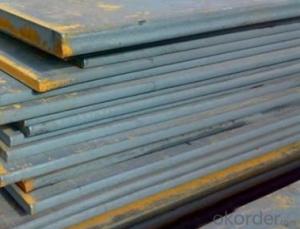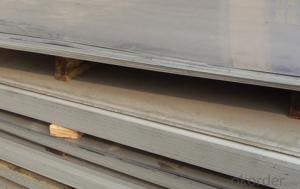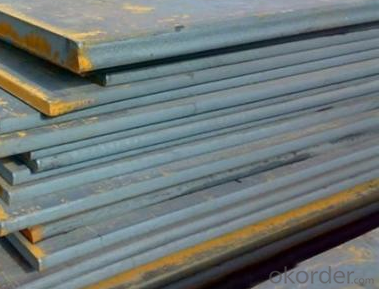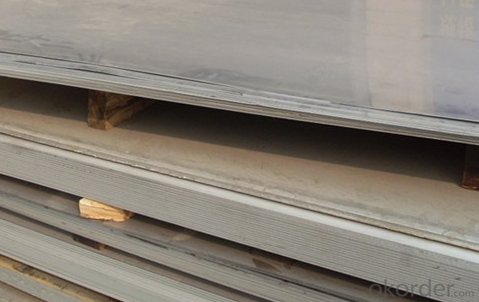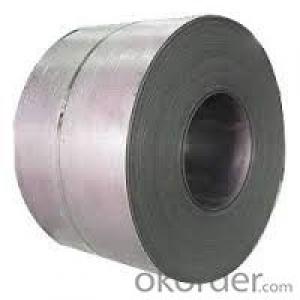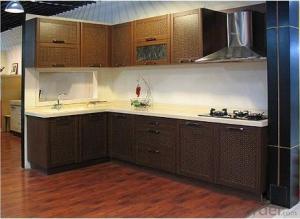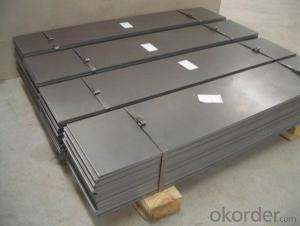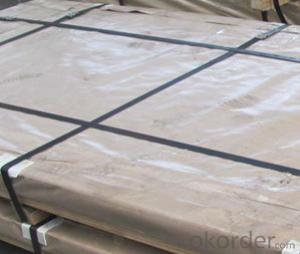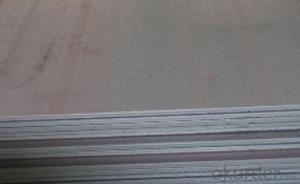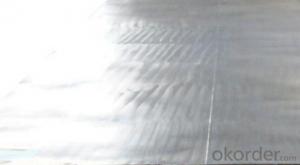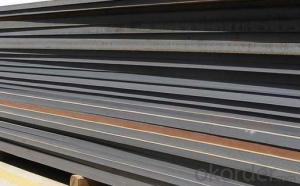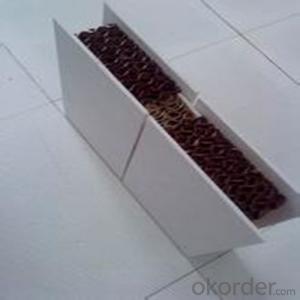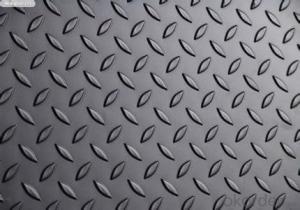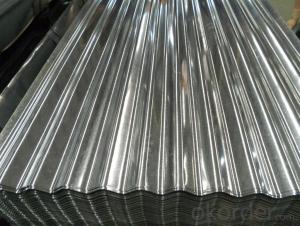Mild Carbon Steel Sheets A36 CNBM
- Loading Port:
- Qingdao
- Payment Terms:
- TT OR LC
- Min Order Qty:
- 10 pc
- Supply Capability:
- 30 pc/month
OKorder Service Pledge
OKorder Financial Service
You Might Also Like
Quick Details
| Grade: | 300 Series | Standard: | JIS, AISI, ASTM, DIN, EN | Length: | 1000-6000 |
| Thickness: | 0.5-100mm | Width: | 1000-2000 | ) | |
| Brand Name: | putan | Model Number: | Q235.Q345 | Type: | Plate |
| Application: | Construction plate,boiler plate,container plate,shipbuilding plate,all | Certification: | BV | type: | plate |
Packaging & Delivery
| Packaging Details: | Export standard package,bundled or be required. The inner size of container is below: 20ft GP: 5.8m(length) x 2.13m(width) x 2.18m(high) 25tons about 24-26CBM 40ft GP: 11.8m(length) x 2.13m(width) x 2.18m(high) 25tons about 54CBM 40ft HG: 11.8m(length) x 2.13m(width) x 2.72m(high) 25tons about 68CBM |
| Delivery Detail: | 7-15 days after receiving the deposit |
Specifications
Q235 Carbon sheet
Original :China
thickness 0.5mm~100mm,
coil steel Processing.
MOQ : 25TON
Carbon Steel plate
Product | SS400 carbon steel plate price |
Standard |
GB/T700-2006,ASTMA283/A283M-03,ASTMA572/A572M,JISG3101-2004,SS400, JIS G3135-1986,SPEC590,EN10025/2-2004,S235JR or S235J2,E335 or S335JR…
|
Width | 500-2000mm |
WT | 0.5 –60mm |
length | 2000—6000mm |
Applications range |
Construction plate,boiler plate,container plate,shipbuilding plate,all kinds of industries and manufacturing structural applications.
|
MOQ | 25 ton / according to customers' requirement |
Quality | good attestation of honour choosed by customers SGS |
Supply capability | 5,000 ton / month |
Key to success | advanced technique and service and low price |
Authentification | ISO9001:2008 |
Market | North/South America, Europe, Asia,Africa,Mid East,ect. |
Packaging |
Standard seaworthy packing / according to the customers’requirement
|
Port | |
Delivery term |
T/T,L/C 30% deposit the balance before shipment,the balance paid by the copy of B/L OR L/C at sight
|
Delivery time | In 15 – 45 days after contract |
- Q: Can steel sheets be used for conveyor belts?
- Yes, steel sheets can be used for conveyor belts. Steel is a versatile and durable material that can withstand heavy loads and high temperatures, making it suitable for conveyor belt applications. Steel sheets can be fabricated into various shapes and sizes, allowing for customization based on the specific conveyor system requirements. Additionally, steel sheets offer excellent resistance to wear, impact, and corrosion, ensuring a longer lifespan for the conveyor belt. Overall, steel sheets provide a reliable and robust solution for conveyor belt applications in industries such as manufacturing, mining, and logistics.
- Q: What is the typical thickness for steel sheets used in construction?
- The typical thickness for steel sheets used in construction varies depending on the specific application, but it generally ranges from 1.5 mm to 10 mm.
- Q: What is the average lead time for manufacturing steel sheets?
- The average lead time for manufacturing steel sheets can vary depending on various factors such as the size and complexity of the order, the current production capacity, and any specific requirements. However, on average, it typically ranges from a few weeks to a couple of months.
- Q: How do you calculate the yield strength of a steel sheet?
- In order to determine the yield strength of a steel sheet, it is necessary to carry out a tensile test, which involves subjecting a sample of the steel sheet to stretching until it fractures. During this test, the stress and strain applied to the sample are measured. The yield strength denotes the point at which the material starts to deform plastically, meaning that it no longer returns to its original shape after the stress is removed. This mechanical property is of great importance as it indicates the maximum stress that the material can endure without undergoing permanent deformation. Throughout the tensile test, the stress applied to the steel sheet is measured as the strain on the sample is gradually increased. Stress is determined by dividing the force exerted on the sample by its initial cross-sectional area. Strain is calculated by dividing the change in length of the sample by its original length. The yield strength is defined as the stress at which a specific amount of permanent deformation occurs, typically 0.2% strain or 0.2% offset. In other words, the yield strength is the stress required to initiate a 0.2% alteration in the length of the sample. Once the stress-strain data is obtained from the tensile test, it is possible to plot a stress-strain curve. By locating the point on the curve where the stress corresponding to the specified amount of strain is reached, the yield strength can be determined. To summarize, to calculate the yield strength of a steel sheet, it is necessary to conduct a tensile test and measure the stress and strain applied to the sample. The yield strength is then determined by identifying the point on the stress-strain curve where a specific amount of permanent deformation occurs, indicating the maximum stress the steel sheet can withstand.
- Q: Can steel sheets be used for soundproofing purposes?
- Yes, steel sheets can be used for soundproofing purposes. Steel is a dense and rigid material that effectively blocks the transmission of sound waves. When used in soundproofing applications, steel sheets can help reduce the amount of sound that passes through walls, floors, or ceilings. They can be installed as a barrier or added as an additional layer to existing structures to increase their soundproofing capabilities. However, it is important to note that steel sheets alone may not provide complete soundproofing, as sound can still travel through other pathways such as windows or doors. Therefore, a comprehensive soundproofing strategy may involve combining steel sheets with other sound-absorbing materials, such as acoustic foam or insulation, to achieve optimal results.
- Q: What are the standard sizes of steel sheets?
- The standard sizes of steel sheets vary, but some common dimensions include 4x8 feet, 4x10 feet, and 5x10 feet.
- Q: Can the steel sheets be used for storage racks or shelves?
- Yes, steel sheets can be used for storage racks or shelves. Steel is a strong and durable material that can support heavy loads, making it ideal for storage purposes. Steel sheets can be cut and shaped to the desired size and can be easily welded or bolted together to create sturdy storage racks or shelves. Additionally, steel is resistant to corrosion and can withstand harsh environmental conditions, making it a suitable choice for both indoor and outdoor storage applications.
- Q: Are steel sheets resistant to warping or bending?
- Steel sheets are generally known for their high tensile strength and stiffness, making them resistant to warping or bending. They are highly durable and can withstand heavy loads without deforming. However, it is important to consider that the thickness and quality of the steel sheet can affect its resistance to warping or bending. Thicker steel sheets tend to be more resistant compared to thinner ones. Additionally, factors like temperature changes and improper handling or installation can also impact the ability of steel sheets to resist warping or bending. Despite these factors, steel sheets are widely used in various industries due to their exceptional resistance to warping or bending.
- Q: Can the steel sheets be easily engraved or etched?
- Yes, steel sheets can be easily engraved or etched. Engraving or etching on steel sheets is a common practice in various industries, such as automotive, aerospace, and jewelry. This process involves using specialized tools and techniques to create intricate designs, patterns, or text on the surface of the steel sheets. The hardness and durability of steel make it suitable for engraving, as it can withstand the pressure and cutting force required to create detailed engravings. Additionally, the smooth surface of steel sheets ensures precise and clear etching results. However, it is important to note that the ease of engraving or etching may vary depending on the type and grade of steel being used.
- Q: How do steel sheets handle vibrations?
- Steel sheets are known for their excellent ability to handle vibrations. This is primarily due to their high stiffness and strength properties. When subjected to vibrations, steel sheets tend to absorb and dampen the vibration energy, thus minimizing the transmission of these vibrations to other parts of a structure or system. The inherent properties of steel, such as its high modulus of elasticity and low damping capacity, contribute to its effectiveness in handling vibrations. The high modulus of elasticity allows steel sheets to resist deformation under applied loads, which helps maintain their structural integrity and stability during vibrations. Additionally, the low damping capacity of steel enables it to dissipate the vibrational energy efficiently, preventing excessive oscillations or resonance. Steel sheets are often used in various applications requiring vibration resistance, such as industrial machinery, automotive parts, and building structures. Their robustness and ability to handle vibrations reliably make them a preferred choice in such scenarios. However, it is worth noting that the specific performance of steel sheets in handling vibrations can vary depending on factors such as sheet thickness, material composition, and design considerations.
Send your message to us
Mild Carbon Steel Sheets A36 CNBM
- Loading Port:
- Qingdao
- Payment Terms:
- TT OR LC
- Min Order Qty:
- 10 pc
- Supply Capability:
- 30 pc/month
OKorder Service Pledge
OKorder Financial Service
Similar products
Hot products
Hot Searches
Related keywords
